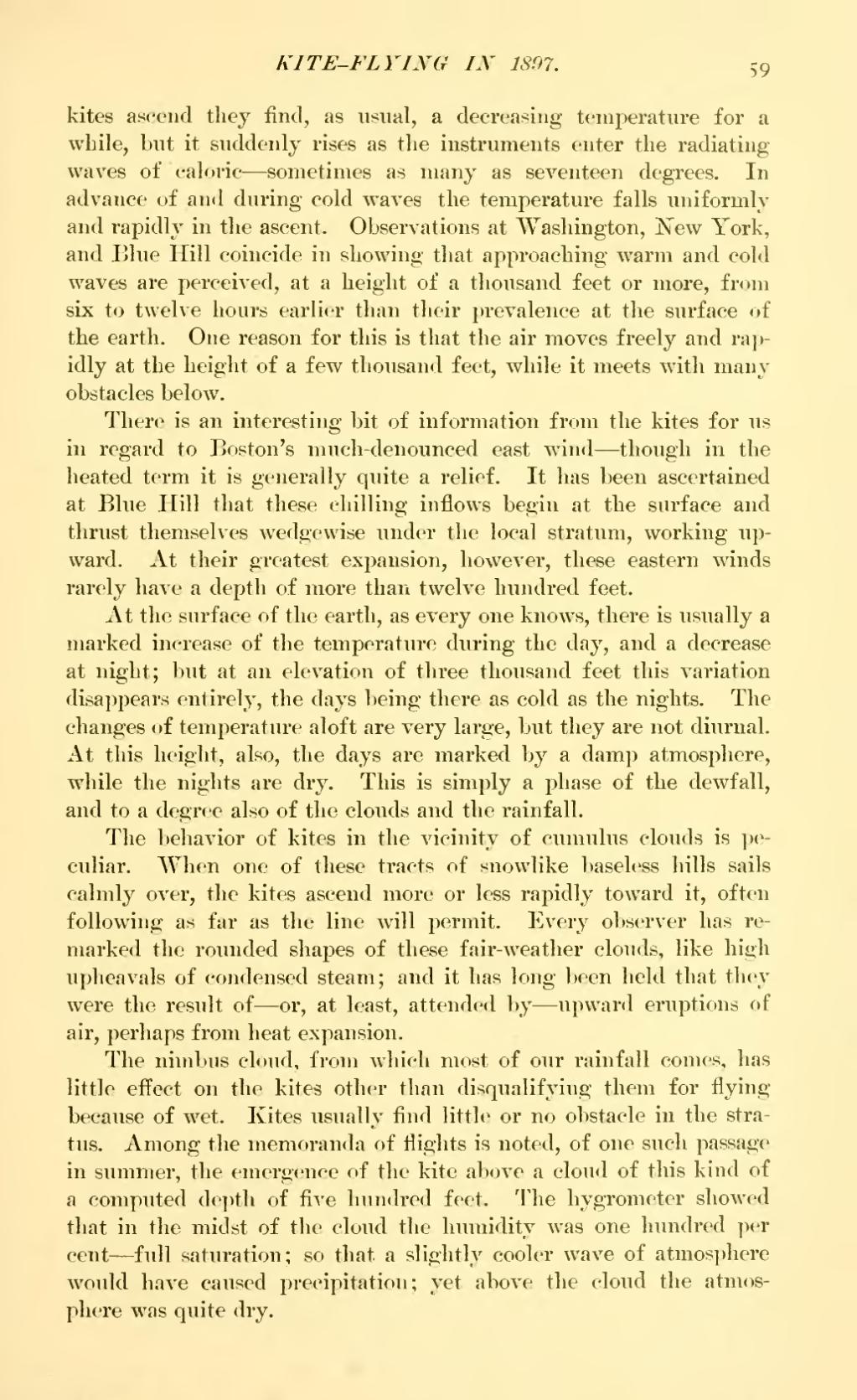kites ascend they find, as usual, a decreasing temperature for a while, but it suddenly rises as the instruments enter the radiating waves of caloric—sometimes as many as seventeen degrees. In advance of and during cold waves the temperature falls uniformly and rapidly in the ascent. Observations at Washington, New York, and Blue Hill coincide in showing that approaching warm and cold waves are perceived, at a height of a thousand feet or more, from six to twelve hours earlier than their prevalence at the surface of the earth. One reason for this is that the air moves freely and rapidly at the height of a few thousand feet, while it meets with many obstacles below.
There is an interesting bit of information from the kites for us in regard to Boston's much-denounced east wind—though in the heated term it is generally quite a relief. It has been ascertained at Blue Hill that these chilling inflows begin at the surface and thrust themselves wedgewise under the local stratum, working upward. At their greatest expansion, however, these eastern winds rarely have a depth of more than twelve hundred feet.
At the surface of the earth, as every one knows, there is usually a marked increase of the temperature during the day, and a decrease at night; but at an elevation of three thousand feet this variation disappears entirely, the days being there as cold as the nights. The changes of temperature aloft are very large, but they are not diurnal. At this height, also, the days are marked by a damp atmosphere, while the nights are dry. This is simply a phase of the dewfall, and to a degree also of the clouds and the rainfall.
The behavior of kites in the vicinity of cumulus clouds is peculiar. When one of these tracts of snowlike baseless hills sails calmly over, the kites ascend more or less rapidly toward it, often following as far as the line will permit. Every observer has remarked the rounded shapes of these fair-weather clouds, like high upheavals of condensed steam; and it has long been held that they were the result of—or, at least, attended by—upward eruptions of air, perhaps from heat expansion.
The nimbus cloud, from which most of our rainfall comes, has little effect on the kites other than disqualifying them for flying because of wet. Kites usually find little or no obstacle in the stratus. Among the memoranda of flights is noted, of one such passage in summer, the emergence of the kite above a cloud of this kind of a computed depth of five hundred feet. The hygrometer showed that in the midst of the cloud the humidity was one hundred per cent—full saturation; so that a slightly cooler wave of atmosphere would have caused precipitation; yet above the cloud the atmosphere was quite dry.
